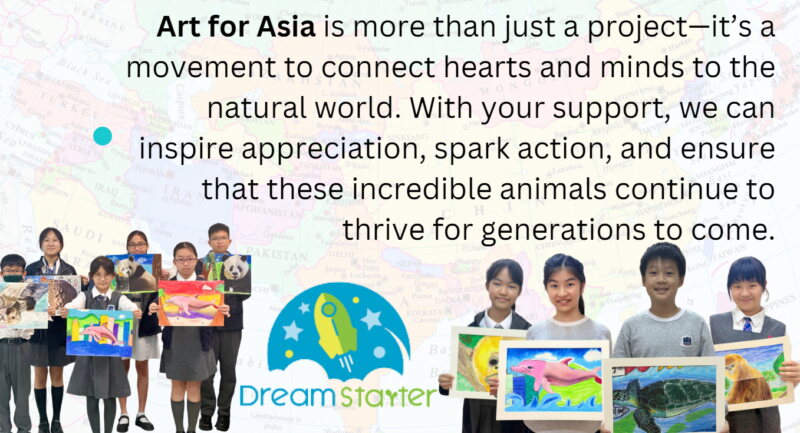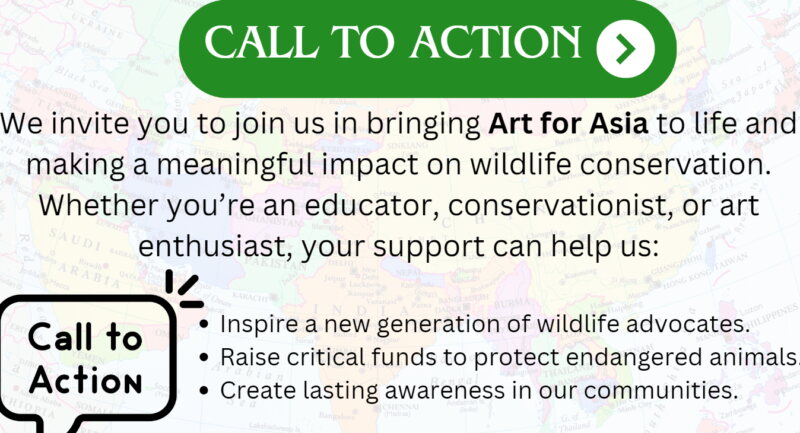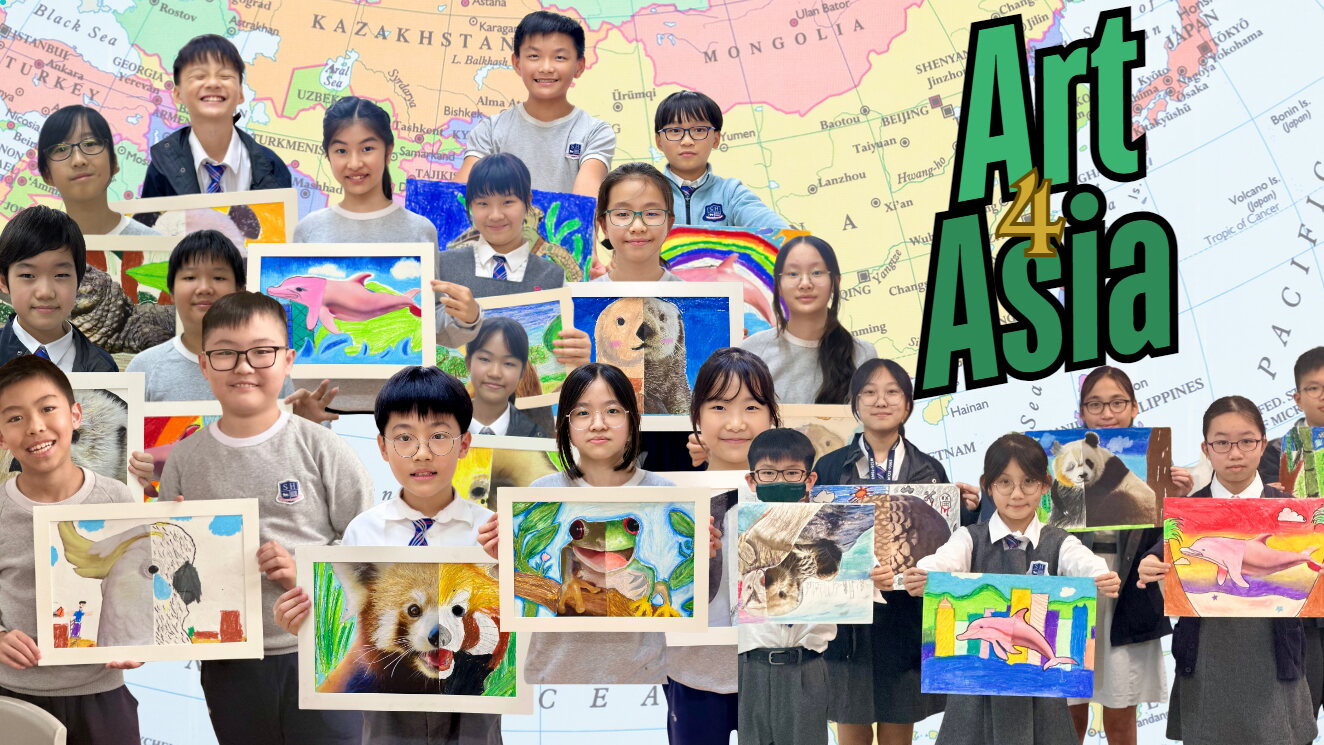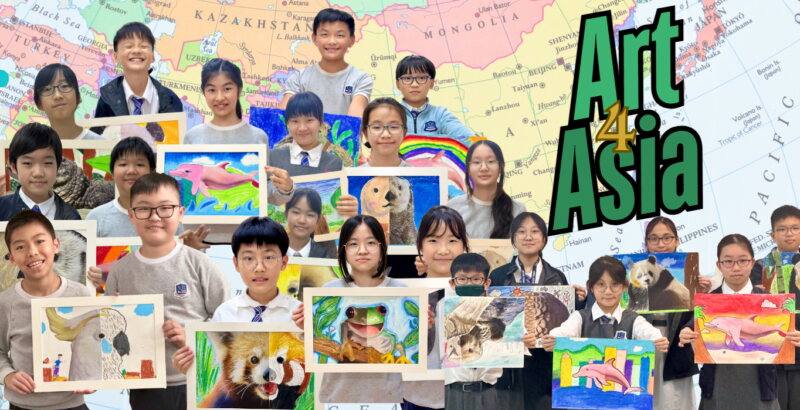
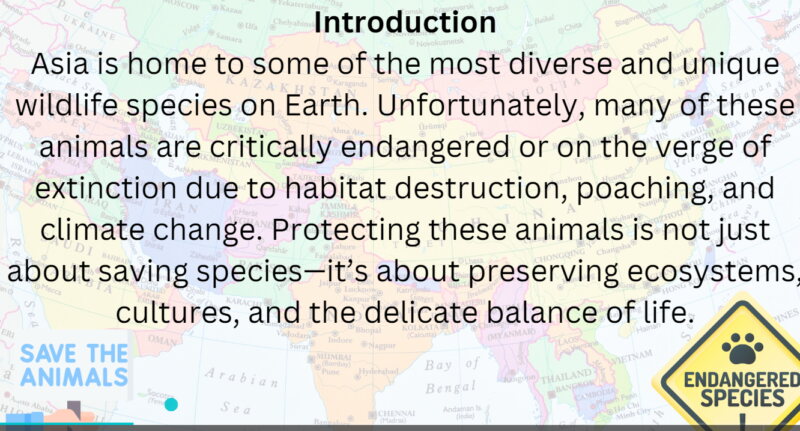
Inspiration came from
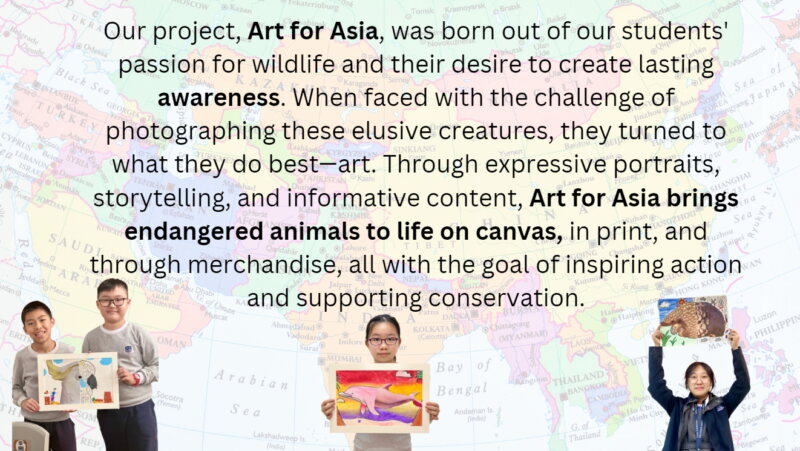
What idea inspired this project?
The idea for Art for Asia was inspired by our students’ passion for wildlife and their desire to protect endangered species. Initially, they wanted to photograph these animals to highlight their beauty and struggles, but the challenge of capturing such elusive creatures led them to explore a different, more creative path—art.
Through expressive animal portraits, storytelling, and research, the students found a way to connect deeply with these species and share their message with the world. Their goal is to inspire others to appreciate and protect Asia’s endangered wildlife, using art as a powerful tool to raise awareness and support conservation efforts. This project was born from the belief that creativity can spark change and that even small efforts can make a big difference in saving our planet’s incredible creatures.
What social problems do you solve?
Art for Asia addresses two pressing social problems:
- Lack of Awareness About Endangered Species: Many people are unaware of the critical threats faced by Asia's wildlife, such as habitat loss, poaching, and climate change. This lack of awareness prevents meaningful action and support for conservation efforts.
- Disconnection From Nature: In today’s fast-paced world, people are increasingly disconnected from nature and wildlife, making it harder to foster empathy and responsibility for endangered species.
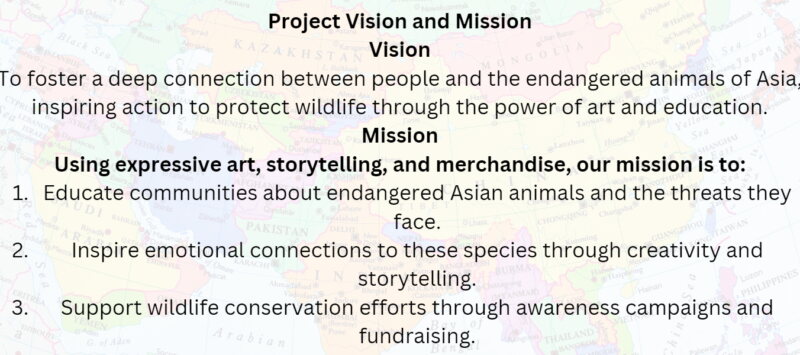
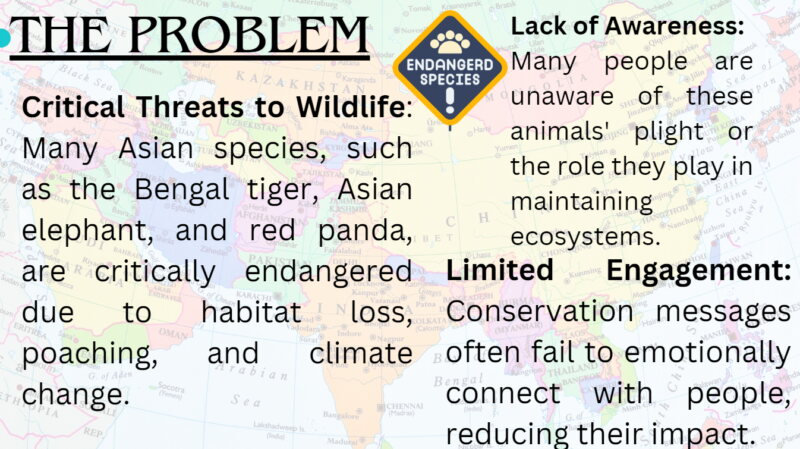
How do we start from 0 to 1
The idea for Art for Asia began with a simple but powerful question: How can we help protect endangered animals in a way that connects with people emotionally?
The Spark of Inspiration
Our students, passionate about wildlife conservation, wanted to raise awareness about endangered species in Asia. Initially, they considered traditional methods like creating informational posters or hosting lectures. However, they realized these approaches often lack a personal, emotional touch. That’s when the idea of using art and storytelling emerged—a creative and meaningful way to bring endangered animals to life for others.
From Idea to Action
To put the idea into practice, we broke it down into simple, actionable steps:
- Step 1: Research
Students began by researching endangered Asian animals, learning about their habitats, threats, and conservation efforts. This gave them a deeper understanding of the animals’ struggles. - Step 2: Art Creation
Next, students used their creativity to create expressive, heartfelt portraits of these animals. The goal was to capture the personality and beauty of each species, making them relatable and inspiring empathy. - Step 3: Storytelling
Each artwork was paired with a written story, blending factual information with emotional narratives about the animal’s life, challenges, and the importance of saving it. - Step 4: Design and Outreach
The artworks and stories were compiled into a professional booklet and transformed into merchandise
The challenge we encountered
Every great project faces challenges, and Art for Asia was no exception. While our idea to use art as a tool for wildlife conservation was inspiring, turning it into reality came with its own set of obstacles. But each challenge motivated us to think creatively, work harder, and remain deeply committed to our mission.
Challenge 1: Connecting with the Cause
At first, it was difficult for our team to truly understand the scale of the problem facing endangered animals. Wildlife can feel distant, especially when we don’t see these animals in our daily lives. To overcome this, we immersed ourselves in research—reading about their struggles, watching documentaries, and speaking with conservation experts. Through this process, we developed a personal connection to these animals, which became the driving force behind our work.
Challenge 2: Turning Creativity into Impact
While our students were talented artists, they initially wondered, How can art actually help save animals? It was a challenge to connect creativity with action in a meaningful way. We realized that combining artwork with storytelling and factual information could make a powerful impact. This realization shaped our project into one that educates and inspires simultaneously.
Our Passion as the Driving Force
Despite these challenges, our team’s passion for wildlife conservation kept us going. Every portrait created, every story written, and every booklet printed reminded us of why we started this project: to give a voice to the voiceless and inspire others to protect Asia’s incredible animals.
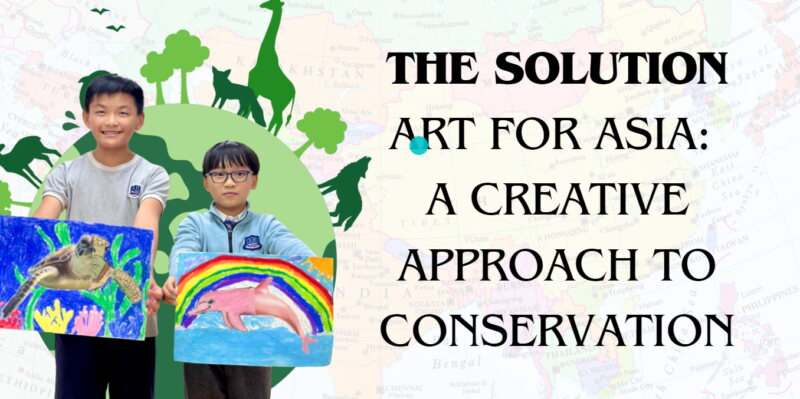
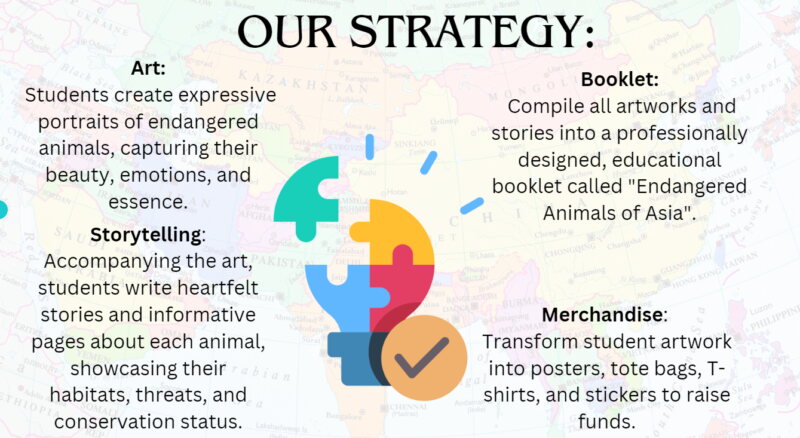
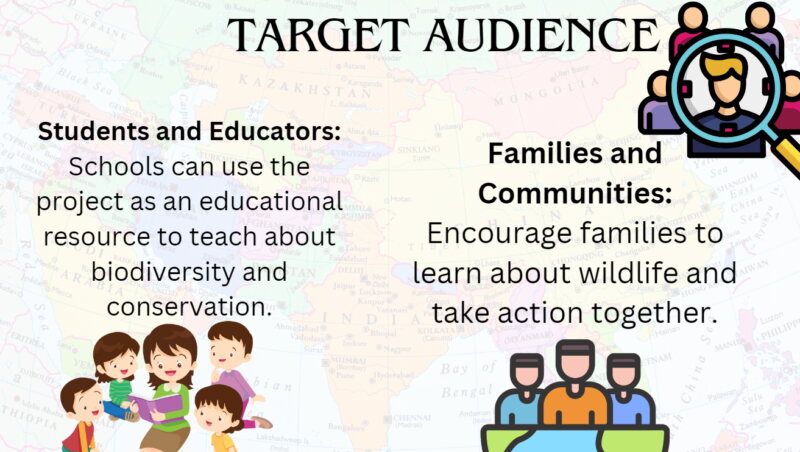
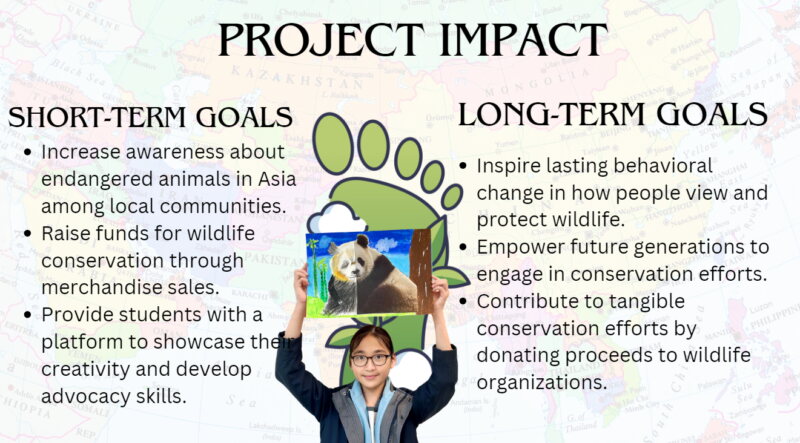
The resources we needed
Awareness and Outreach Platforms
The Challenge: Even after creating beautiful art and powerful stories, we struggled to spread our message. We realized that without strong outreach efforts, our project wouldn’t reach the audience it needed to inspire change.
What We Needed:
- Social media tools and training to effectively promote our project online.
- Partnerships with schools, community centers, and local events to showcase our work.
- Platforms to sell our merchandise and distribute our booklets, such as online stores or pop-up booths.
who are we
